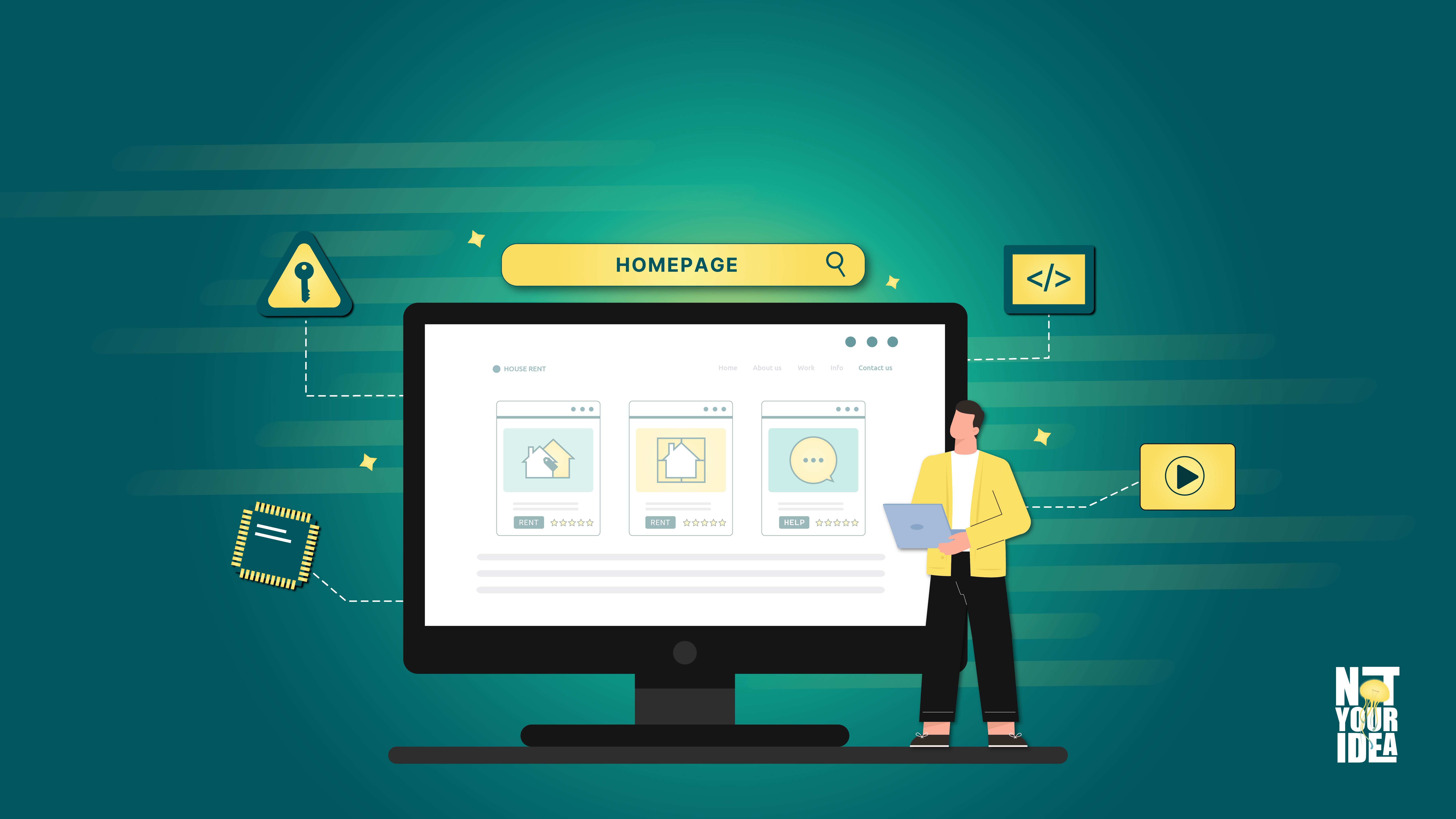In the race to keep up with AI and reach audiences across platforms, there’s one salesman getting ignored—your homepage! It’s a visitor’s first impression, determining whether they stay and convert or click away to your competitors. Naturally, missing critical issues on the homepage could be costing you leads, sales, and search rankings.
With a comprehensive digital presence audit as our highlight service, we know a thing or two about making sure your website is spick and span! You can DIY your way through identifying and fixing homepage issues with a systematic approach covering user experience, content quality, and technical performance. This guide will walk you through how to do a website homepage audit yourself; it takes just a few hours but can dramatically improve your site's effectiveness.
First Off: What is an Audit?
Put it simply, an audit is a systematic and in-depth examination of assets or documents. In this context, it’s an examination of your website that, when benchmarked against your competitors, reveals result-driven insights guaranteed to elevate your digital impact.
This DIY website homepage audit is a microcosm of the larger process, with just enough detail to give you some sure fixes. To get impact-driven insights, it’s important to measure all the following pointers alongside your competitors. This gives you accurate benchmarks on what to do and what could (and couldn’t) work for you.
Stage 1: Website Homepage UI/UX Audit
Header and Footer Navigation
Start by examining whether your main navigation menu contains only essential pages that visitors actually need. A good number is 5-7 items to the maximum, to avoid overwhelming users. Your footer should complement the header by including secondary links like Privacy Policy, Terms of Service, and social media links. But, make sure it isn’t duplicating primary navigation. Test that every link works properly and leads to the correct destination, as broken navigation immediately signals unprofessionalism to visitors and website crawlers alike.
Effective Calls-To-Action
The worst CTA is one that exists, but is invisible. Your call-to-action buttons need to attract attention, standing out visually from the rest of your page. A good check is if they’re using contrasting colors (preferably aligning with your brand palette) while ensuring readability. The CTA should have action-oriented language like "Get Started," "Download Now," or "Contact Us" rather than generic terms like "Click Here" or "Submit." On desktop and mobile, check to see that there's sufficient white space around the buttons, and that they're large enough to be easily clickable.
Image Clarity
High-resolution images that load quickly are essential to maintain user engagement while conveying professionalism. Are any of the images hazy, badly framed, or taking a long time to load? This is where you know there’s a fix needed.
Compress images to balance quality with loading speed, aiming for file sizes under 100KB for web graphics and under 500KB for hero images. Your images should also have descriptive alt text for accessibility purposes, and verify they display correctly across different screen sizes and browsers.
Interactive Elements & Lead-Gen IPs
Imagine a visitor comes to your site, likes what they see, and hits the ‘Contact Us’ form… only to have some unknown error that prevents it from loading. To avoid rookie mistakes like this, test all your forms, pop-ups, and interactive elements. Make sure they capture leads effectively without creating friction in the user experience. Finally, confirmation messages need to appear after form submissions, and leads need to be properly routed to your CRM or email system.
Navigation Flow
Rope in someone unfamiliar with your business for this task; a friend works well. Ask them to perform key tasks like finding your pricing, contact information, or main services within 30 seconds. Are they getting annoyed, confused, or frustrated? Document each instance, as these are pain points that indicate where your navigation needs simplification or restructuring.
A Simple Scroll Test
The best way to test the site is doing it yourself! Scroll through your entire homepage at different speeds to identify any elements that load slowly, jump unexpectedly, or display incorrectly during the scrolling process. Pay attention to visual glitches, sticky headers, and animated elements that load slowly. Test this across multiple browsers and devices, as scrolling behavior can vary significantly between platforms.
Auditing Your Homepage Content
Language and Grammar
This is a prime example of making sure the basics are in place! Plenty of free tools are available online that can do a scan of the language on your page, flagging grammatical errors. Better yet, have a fresh pair of eyes proofread everything. Ensure your tone matches your brand personality and speaks directly to your target audience using language they understand and relate to. Ask yourself questions like, are the sentences concise and scannable? Are there too many large blocks of text? Is it challenging for me to actually consume the content on the page?
Understand Your Top Search Words
Time to put on your SEO hat. Research the keywords your target audience uses when searching for your products or services, then check if your homepage naturally incorporates these terms in headlines, descriptions, and content. Some handy tools you can use are Semrush, Ahrefs, Ubersuggest, and Google Keyword Planner.
Then, see where your website currently ranks for these terms, and identify gaps where competitors might be outperforming you. Focus on primary keywords that have good search volume but aren't overly competitive for your business size and market position.
Up-to-date Pdfs and Blogs
Audit all downloadable resources, blog posts, and documentation referenced on your homepage to ensure all your information is current and relevant. Remove or update any content that contains outdated pricing, discontinued services, or references to past events; these only confuse visitors and give the impression of an outdated website. Go a step further to plan ahead by creating a calendar to regularly review and refresh these materials, as stale content can hurt both user experience and search engine rankings.
Homepage Tech Audit Elements
Error Detection With SEO Timer
Use SEO Timer to get a comprehensive overview of technical issues affecting your homepage's search performance, including missing meta descriptions, broken links, and page speed problems. The tool provides prioritized recommendations, so focus first on critical errors that could be preventing search engines from properly indexing and ranking your page. Address issues systematically, starting with the highest-impact problems that are also easiest to fix.
Mobile Responsiveness
A good way to check your homepage load speed is by using the free Google Lighthouse tool. Just right-click anywhere on the page, hit ‘Inspect’, navigate to Lighthouse and click on it to pull open the selection layout. There, ensure ‘Performance’ is ticked, and then ‘Analyze page load’ to get some technical insights. You can also use PageSpeed Insights for the same.
The tool will give you specific recommendations for improving loading speed on both desktop and mobile devices. Pay particular attention to mobile performance scores, as Google prioritizes mobile-first indexing and most users now browse on mobile devices!
Broken Link Checking
No tools to help you here—manually test every clickable element on your homepage, including navigation menus, buttons, social media icons, and embedded links. The aim is to ensure they lead to the correct destinations. Use automated tools like Dead Link Checker as a backup, but don't rely solely on them since some tools may miss certain types of broken links or dynamic content. Similar to checking content, create a regular schedule for link checking, especially after website updates or content changes that might affect internal linking structure.
Wrapping Up
Ready to take your homepage from good to exceptional? Start with these DIY steps, but don't hesitate to invest in professional expertise when your business growth demands it. While this audit gives you a solid foundation to identify and fix common homepage issues, it's important to recognize that what we've covered here is just the surface. If you’d like a comprehensive website or digital presence audit, we’re just a click away!
FAQs
What is a Website Audit?
A website audit is typically a deep dive into your website, covering aspects like UI/UX, SEO, tech, and content, depending on what your needs are. Digital Presence audits cover websites as one of their platforms, ensuring that every link and button is examined. The results are insights guaranteed to improve your digital standing.
How to Do a Website Content Audit?
Conducting a thorough website audit involves multiple layers and steps, from collecting base data to analysis for insights and recommendations. An easy place to start is following the instructions in this blog to conduct a base-level homepage.
Which Tool is Best for a Website Audit?
There are various tools for website audit. Some of the tools are Semrush, Screamfrog, Morning Score, and many more.
Is 80 a Good SEO Score?
According to Agency analytics, an SEO score beyond 80 is good and average, indicating a website is SEO optimised.
Can You Use AI to Analyse a Website?
Yes, AI can be used to analyse a website. Some of the AI tools are ChatGPT, Nightwatch AI SEO Agent, and many more.



